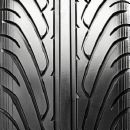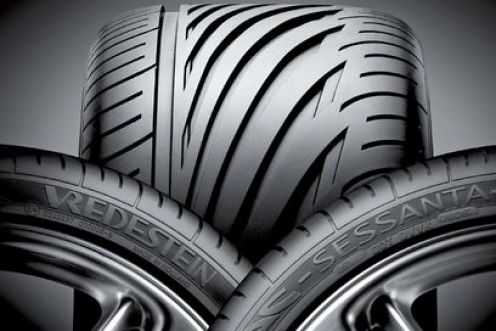-
There were many reasons for the change of the site software, the biggest was security. The age of the old software also meant no server updates for certain programs. There are many benefits to the new software, one of the biggest is the mobile functionality. Ill fix up some stuff in the coming days, we'll also try to get some of the old addons back or the data imported back into the site like the garage. To create a thread or to reply with a post is basically the same as it was in the prior software. The default style of the site is light colored, but i temporarily added a darker colored style, to change you can find a link at the bottom of the site.
You are using an out of date browser. It may not display this or other websites correctly.
You should upgrade or use an alternative browser.
You should upgrade or use an alternative browser.
tires
- Thread starter bluep
- Start date
If they are OEM tires, they are directional.Have any of you people crossed your front tires ?? I mean just switch them wheels and all from one side to the other. The tires will then be running backward in relation to the way they were running.
oldguyinTX
New member
I am pretty sue that ALL MC tires are directional. Running them the wrong way is inviting tire failure, or worse. Some car tires are directional as well, like my snow tires.
ARtraveler
R.I.P. Dwayne
Here, the short answer is no. There may be consequences if you run a "directional" tire backwards from the way it is supposed to go.
 opcorn::bbq:
opcorn::bbq: opcorn::bbq:
opcorn::bbq:
P.S. I usually get between 20 and 25K on my OEM fronts. My 2014 now has 22K but will need new in about four months.
P.S. I usually get between 20 and 25K on my OEM fronts. My 2014 now has 22K but will need new in about four months.
Last edited:
Pampurrs
Pragmatic Member
If you rotate your front tires, you have to dismount and remount them so they are going the proper direction. Popular wisdom on this forum says don't bother rotating them. I have nearly 14,000 on mine, and they still have great tread depth measured evenly across the surface. I decided to obey the common wisdom and have refrained from rotating mine.
There're a couple of threads on this topic.
Pam
There're a couple of threads on this topic.
Pam
oldguyinTX
New member
If you rotate your front tires, you have to dismount and remount them so they are going the proper direction. Popular wisdom on this forum says don't bother rotating them. I have nearly 14,000 on mine, and they still have great tread depth measured evenly across the surface. I decided to obey the common wisdom and have refrained from rotating mine.
There're a couple of threads on this topic.
Pam
:agree: 15K plus on mine and still in great shape. Hope to get another 5K or more out of them.
BLUEKNIGHT911
Sadly Passed Oct 2024 - RIP
CROSSED TIRES
....This begs the question ?????.... WHY....if you answer this .....Maybe we can tell you more info......Mike :thumbup:Have any of you people crossed your front tires ?? I mean just switch them wheels and all from one side to the other. The tires will then be running backward in relation to the way they were running.
oldguyinTX
New member
Well the Owners Manual does say to rotate them (on a 2013 RTL) when the tread depth reaches 4mm (5/32") to maximize tire life, but I have seen no uneven wear on mine. I think that proper inflation & the Laser alignment has helped.
SpyderNeil
New member
Well the Owners Manual does say to rotate them (on a 2013 RTL) when the tread depth reaches 4mm (5/32") to maximize tire life, but I have seen no uneven wear on mine. I think that proper inflation & the Laser alignment has helped.
From the Owner's Manual on page 139:
Tire Rotation (Front)
Rotate front tires when tread depth
reaches 4mm (5/32 in). This will maximize
tire life.
WARNING
The tires are designed to rotate
only in one direction. Do not
switch the left and right front
wheels. The tires must be dismounted
from the wheels for tire
rotation. If a tire is mounted on the
incorrect side, you will have less
traction and could lose control.
CAUTION Do not hold the front
wheel spoke while attempting to
spin the front wheel as your fingers
may be caught between the wheel
and the brake caliper.
Hope This Helps
Neil
AeroPilot
Member
Rotated/remounted ours at around 10,000
Had some cupping and thought it was worth the trouble to extend wear. Still have some light "feathering" type wear but wearing well across the tread at 18,000 miles now, and probably another 5,000 in them....or until I get ready to change them out.
OH.... and yes....... HEED the WARNING IN THE MANUAL -- I have a boogered nail on my right index finger to ATTEST! Hurt like HE>>>>!
CAUTION Do not hold the front
wheel spoke while attempting to
spin the front wheel as your fingers
may be caught between the wheel
and the brake caliper.
Well the Owners Manual does say to rotate them (on a 2013 RTL) when the tread depth reaches 4mm (5/32") to maximize tire life, but I have seen no uneven wear on mine. I think that proper inflation & the Laser alignment has helped.
Had some cupping and thought it was worth the trouble to extend wear. Still have some light "feathering" type wear but wearing well across the tread at 18,000 miles now, and probably another 5,000 in them....or until I get ready to change them out.
OH.... and yes....... HEED the WARNING IN THE MANUAL -- I have a boogered nail on my right index finger to ATTEST! Hurt like HE>>>>!
CAUTION Do not hold the front
wheel spoke while attempting to
spin the front wheel as your fingers
may be caught between the wheel
and the brake caliper.
Pampurrs
Pragmatic Member
Here's my post from last October asking the same questions. The responses (the ones from those I trust) convinced me to just let it go. I'm glad I did.
http://www.spyderlovers.com/forums/showthread.php?87489-Rotating-front-tires
Pam
http://www.spyderlovers.com/forums/showthread.php?87489-Rotating-front-tires
Pam
Chupaca
New member
No....
I got 32,000 on the front oem tires and never rotated them. I do suggest the laser alignment to avoid uneven wear. If you switch to the car tires , as many do, you can swap them all you want. I don't. if you rotate to compensate for wear I reiterate get the alignment...:thumbup:
I got 32,000 on the front oem tires and never rotated them. I do suggest the laser alignment to avoid uneven wear. If you switch to the car tires , as many do, you can swap them all you want. I don't. if you rotate to compensate for wear I reiterate get the alignment...:thumbup:
Dudley
New member
My thoughts on this....It's a dealer's way of making extra money, then changing your worn out tire at about the same time as would if you had never rotated them. Front tires are capable of getting 25,000+ miles on them, rotated or not. IMHO, save your money and run them till you need to change. I am now on my 3rd Spyder, have ridden 114,000 miles and rotated one set of tires, only to get the tires out of balance and they would not balance. My thoughts, your decision. Happy Trails.
IdahoMtnSpyder
Active member
From what I have read the directional restriction is based solely on the the tread design. Structurally there is no significant impact in reversing the rotation. Tires with a bi-directional tread pattern can be run either direction.I am pretty sue that ALL MC tires are directional. Running them the wrong way is inviting tire failure, or worse. Some car tires are directional as well, like my snow tires.
BLUEKNIGHT911
Sadly Passed Oct 2024 - RIP
WHAAAAAAAAAAAAAAAAAAAT
:lecturef_smilie:......If a tire has " arrows " on it ......it better be rolling in that direction........They aren't put there as a decoration:shocked:......Mike :thumbup:From what I have read the directional restriction is based solely on the the tread design. Structurally there is no significant impact in reversing the rotation. Tires with a bi-directional tread pattern can be run either direction.
IdahoMtnSpyder
Active member
That's because of the tread pattern, which I believe matters mostly on wet roads only, not dry roads. Yes, it is best to run them in the arrow direction, but the world won't come to an end if they run the other way. In fact, when I was first looking for a used Spyder over 2 years ago my brother checked one out for me in Houston. It had several thousand miles on it. He pointed out to the owner that the front tires were mounted backwards. Didn't hurt the Spyder any!:lecturef_smilie:......If a tire has " arrows " on it ......it better be rolling in that direction........They aren't put there as a decoration:shocked:......Mike :thumbup:
IdahoMtnSpyder
Active member
From here: http://www.barrystiretech.com/directionalandasymmetricaltires.html
[TABLE="width: 820"]
[TR]
[TD="width: 400"]Directional Tires will have an arrow on the sidewall. If it doesn't have an arrow, it's non-directional! and it doesn't matter which way it rotates.
Directional tires are primarily about wet traction - although snow traction is sometimes the intent in the design. As a general rule, directional tires will have an "arrowhead-like" tread pattern - it seems to point in the direction of travel. If you mount a directional tire backwards - so that it is rotating the wrong direction - the only problem caused is wet (or snow) traction. It does not affect wear, pull, dry traction, ride, or any other characteristics. If you have one of those problems, then the problem has nothing to do with the direction of rotation of the tires.
If you are mounting directional tires on rims, you want 2 tires pointing one direction, and 2 tires pointing the other direction.
Directional tires can only use a front to back rotation pattern - no switching the tire to the other side.
CAUTION: Some rims are also directional, so a little care before doing any work will pay many benefits.[/TD]
[TD="width: 20"][/TD]
[TD] [/TD]
[/TD]
[/TR]
[/TABLE]
[TABLE="width: 820"]
[TR]
[TD][/TD]
[TD="width: 400"] Sometimes it appears that a tire has a direction to it, but it doesn't have an arrow - like the tire to the left.
While this tire seems to be directional, it doesn't matter which direction it travels - and I'll explain that in a minute.
Let me say it again:
If it doesn't have an arrow, it is not directional![/TD]
[/TR]
[/TABLE]
Similar threads
- Replies
- 2
- Views
- 984
- Replies
- 13
- Views
- 403
- Replies
- 2
- Views
- 379
- Replies
- 6
- Views
- 268
